While walking through the Rattray Marsh in fall, taking photos of as many warblers, sparrows and kinglets as I can before they disappear south for a few months, I sometimes notice the shrubs, trees and flowers they are perching on. One type is particularly eye catching because it has small, twisted, yellow clumps of either unattractive wilted spindly flowers or new leaves along its stems even though everything else is shedding leaves and going dormant.
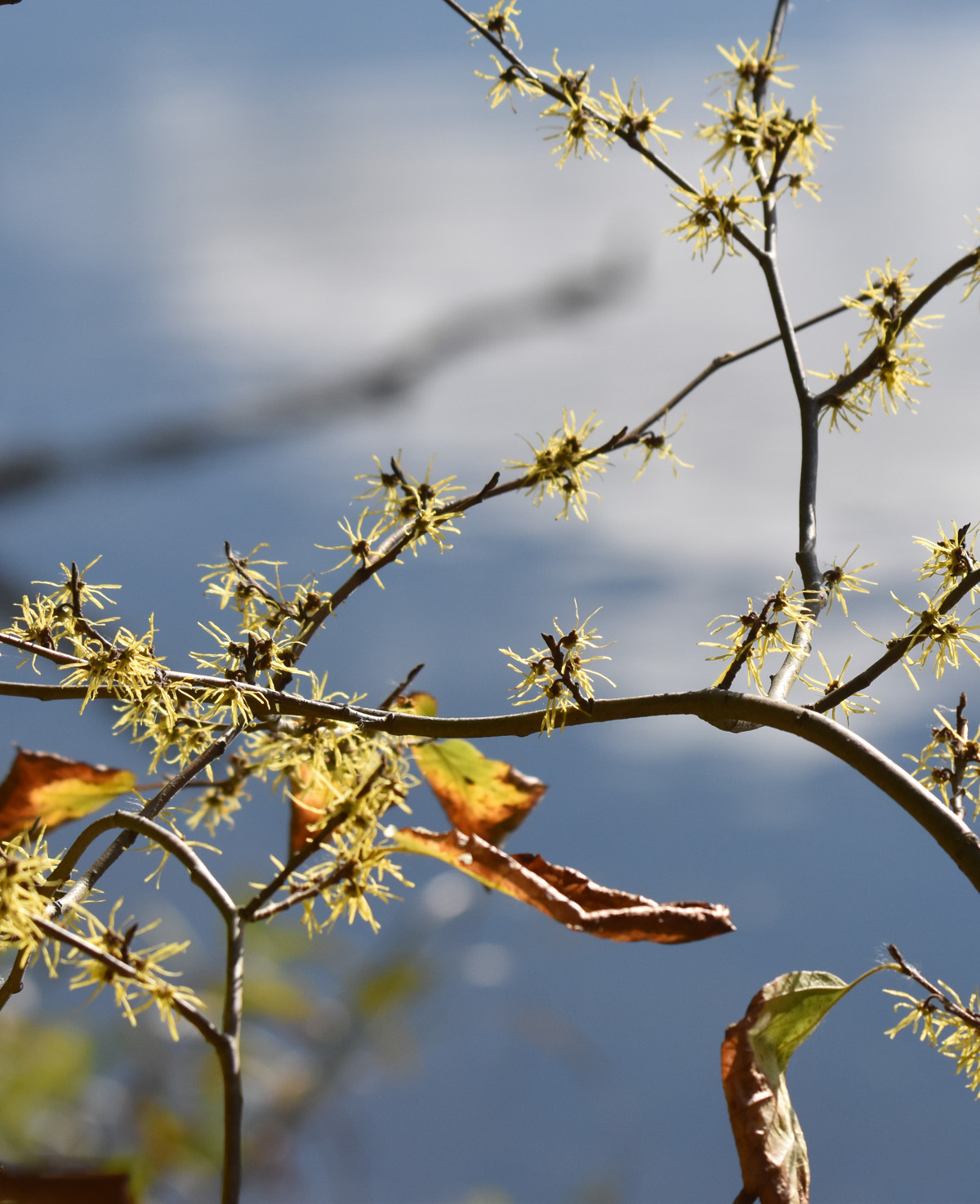
The Witch Hazel blooms show up more vividly against the blue creek than against the leaf litter in the forest.
Which Hazel is Witch Hazel?
The only shrubs or bushes I could name with yellow flowers were Forsythia and Spicebush. Forsythia is the one I have in my back yard, like many other Canadian gardeners. And Spicebush is something I’ve only heard about when reading about other people’s visits to more southern parts of Ontario like the Rondeau and Pelee parks.
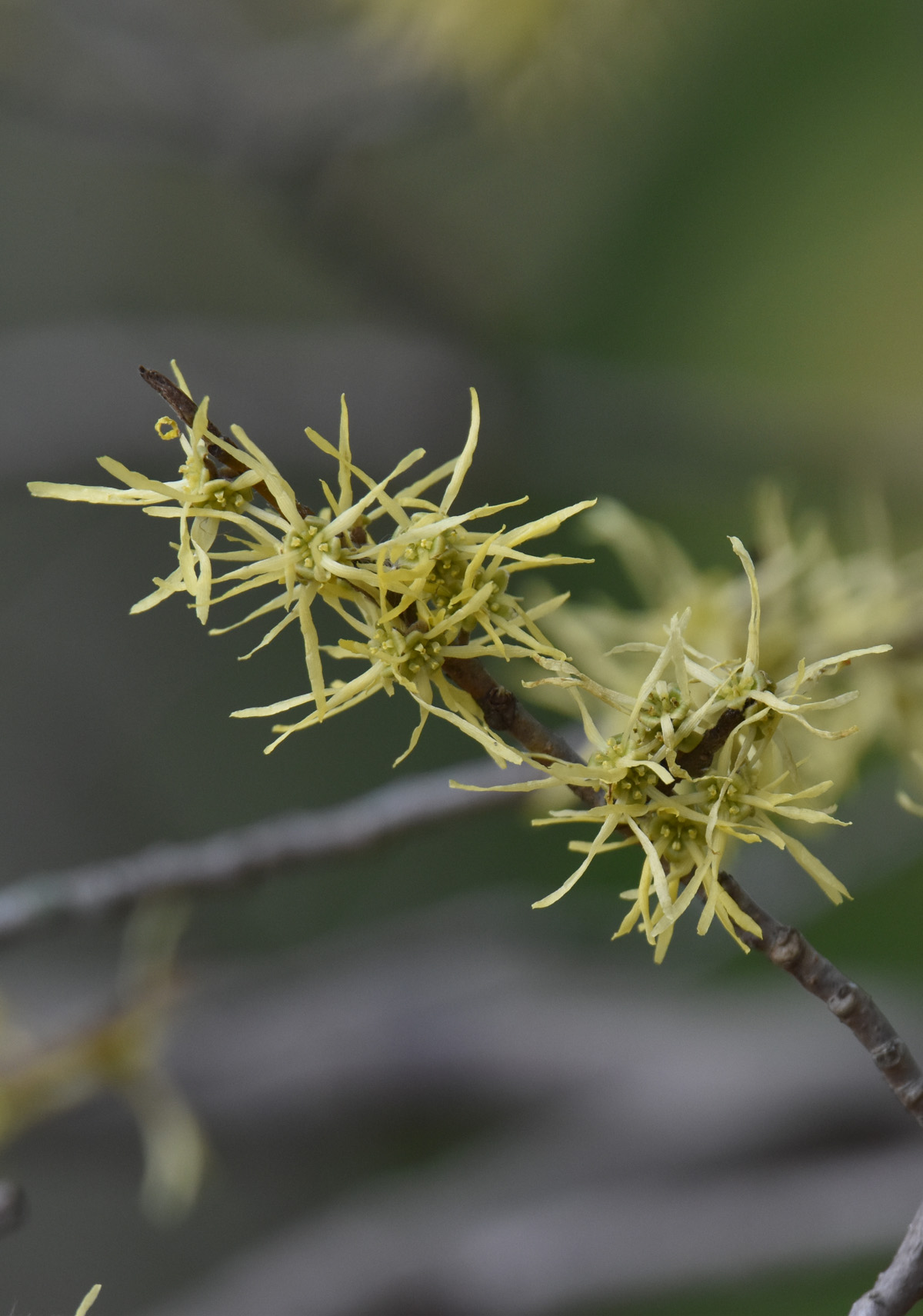
If you look closely you can see the yellow petals surround 4 tiny yellow stamens.
So when I took photos of the yellow autumn growths on this big shrub or small tree one September, and confirmed they were flowers, I wasn’t sure what I was looking at. Many spring-flowering plants will have a few blossoms again in the autumn but these flowers were all over the twigs and branches. They didn’t look like just a few buds that had been tricked into opening too soon by lower light levels and cooler temperatures.
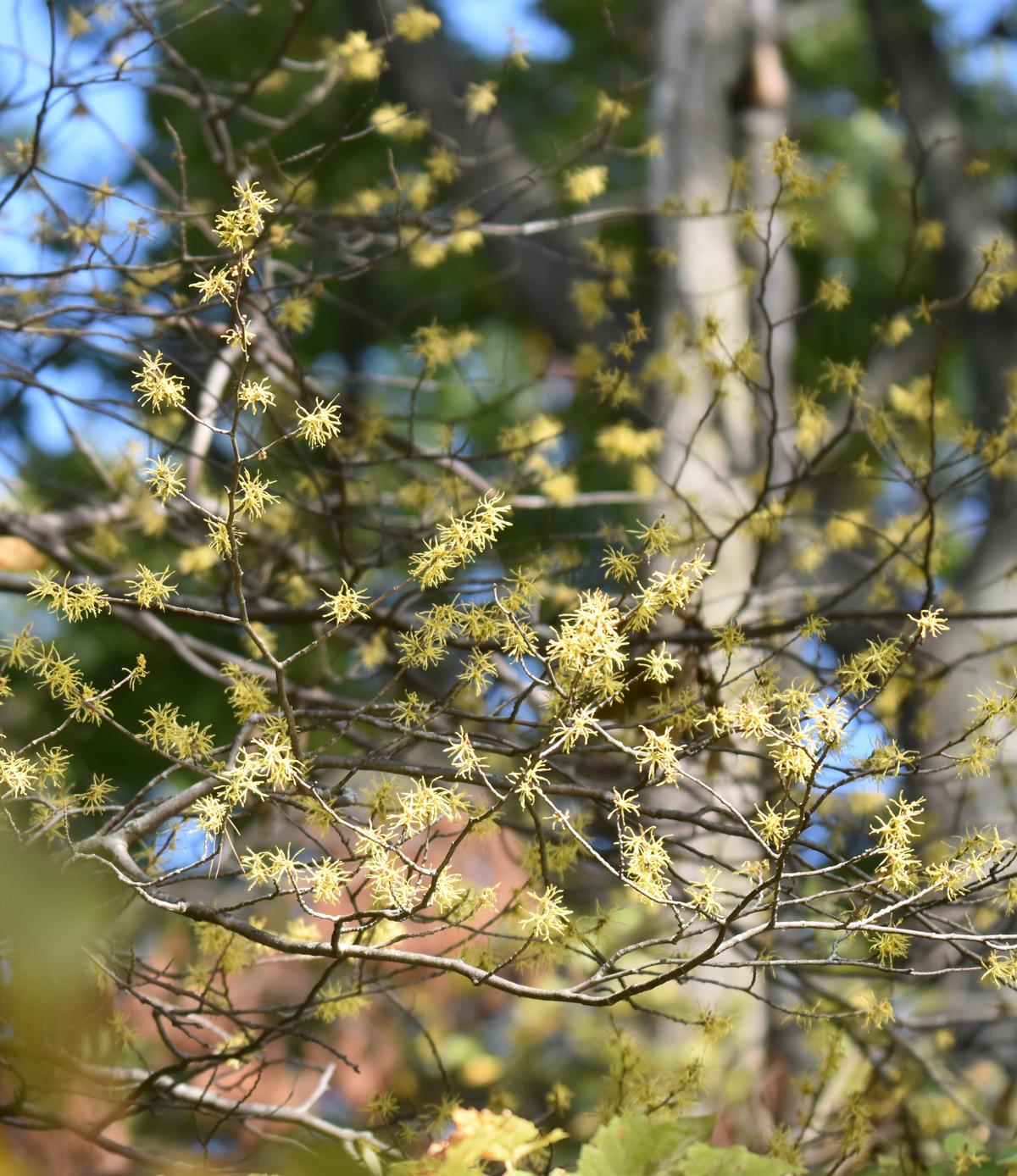
There were LOTS of blossoms on the Witch Hazel branches.
I tried the new iNaturalist.org website to identify my find. If you upload a photo using the website or the app, and click on the Species Name box it will suggest what the program considers matches based on appearance and location. To my surprise, what came up as the preferred suggestion was Witch Hazel.
Isn’t Witch Hazel That Treatment for Sunburn?
The only time I’d heard of Witch Hazel before was when I had an epic sunburn in my youth. I didn’t realize the liquid is made from the bark and twigs of a native North American plant. Apparently the tannins and other compounds from the shrub are useful for some skin complaints and possibly for hemorrhoids.
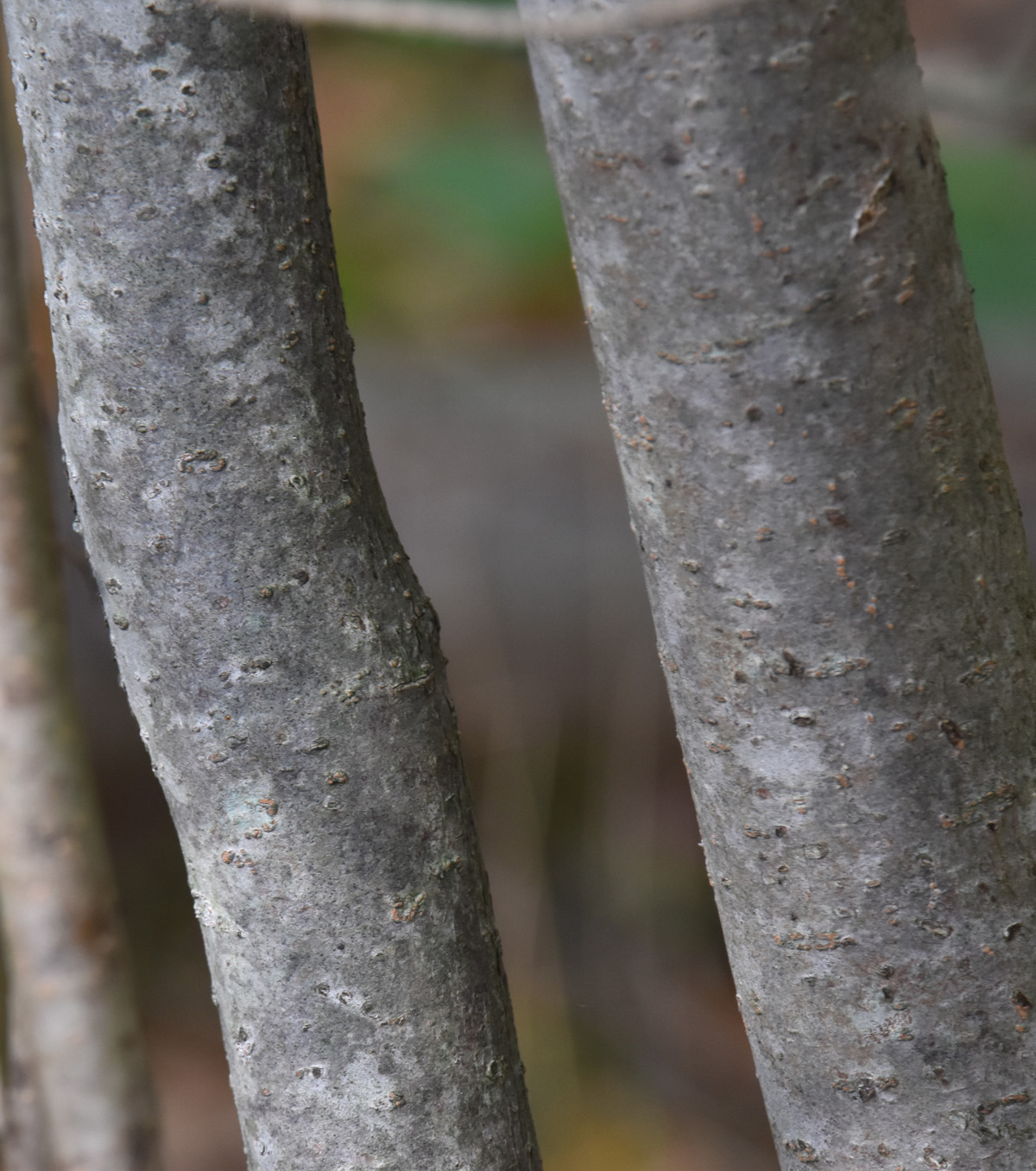
The Witch Hazel trunks were quite small, too big to close one hand around but easily spanned with two hands.
(Please remember that gathering plants or even dead branches from parks is not allowed. There are a huge number of creatures from tiny microbes to Pileated Woodpeckers that depend on those trees to survive. An interested consumer can buy clean, properly-made from domestic plants Witch Hazel at a drugstore cheaply and easily.)
Is Witch Hazel a Plant, a Shrub or a Tree?
Hamamelis virginiana or American Witch Hazel is a small deciduous tree. It’s a bit confusing because several stems or trunks may start from very close to the base. It is usually under 10 m or 30 feet in height. The ones I’ve seen tend to grow out rather than up making them appear shorter but that may be because they are under a canopy of much taller oaks, pines and maples.
If It Blooms In the Fall, What Pollinates Witch Hazel?
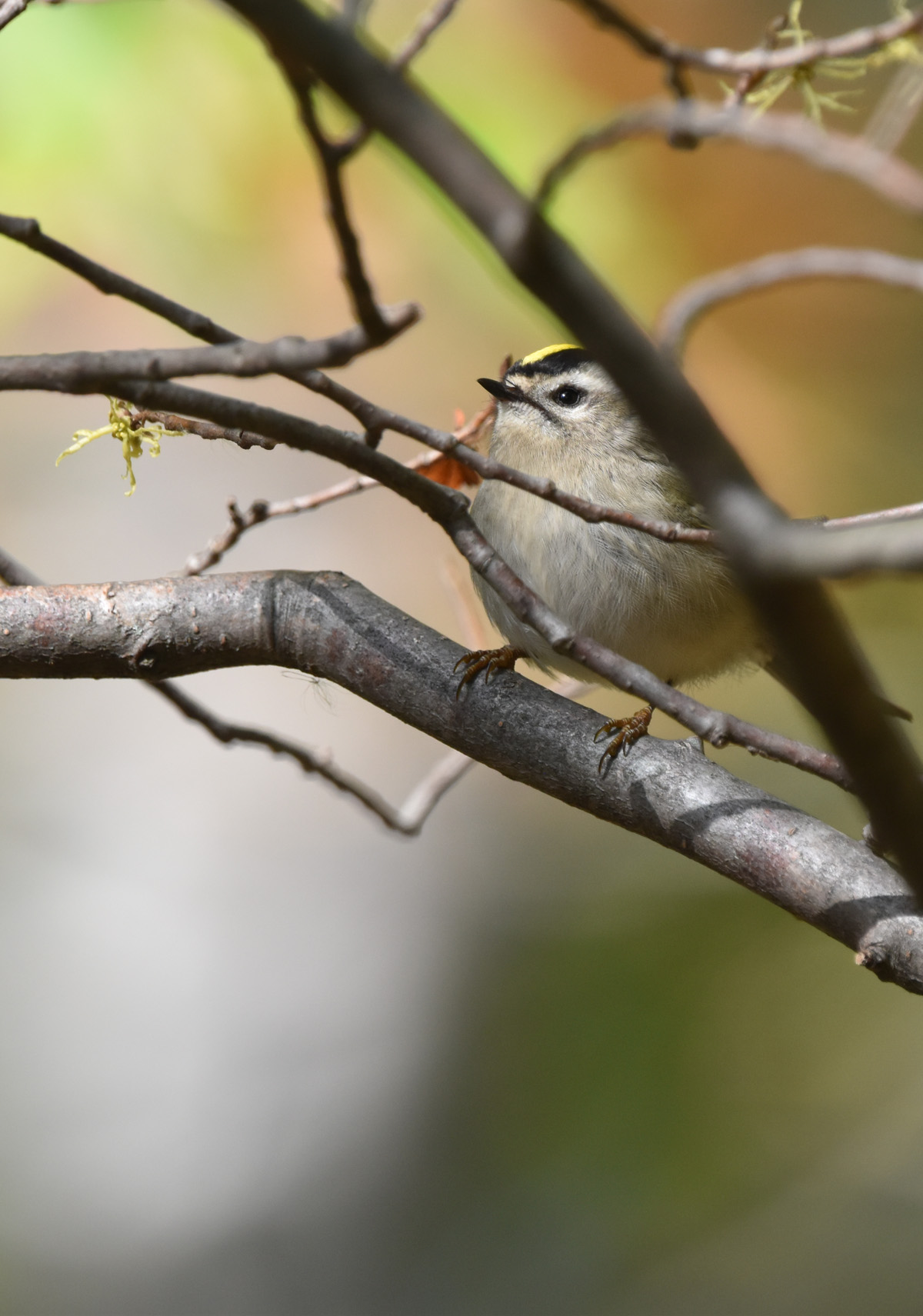
This Golden-crowned Kinglet was after insects in the Witch Hazel.
I wasn’t sure whether the flowers were pollinated by the wind or by creatures. According to the Illinois Wildflowers website Witch Hazel relies on flies and wasps plus other insects to get the job done.
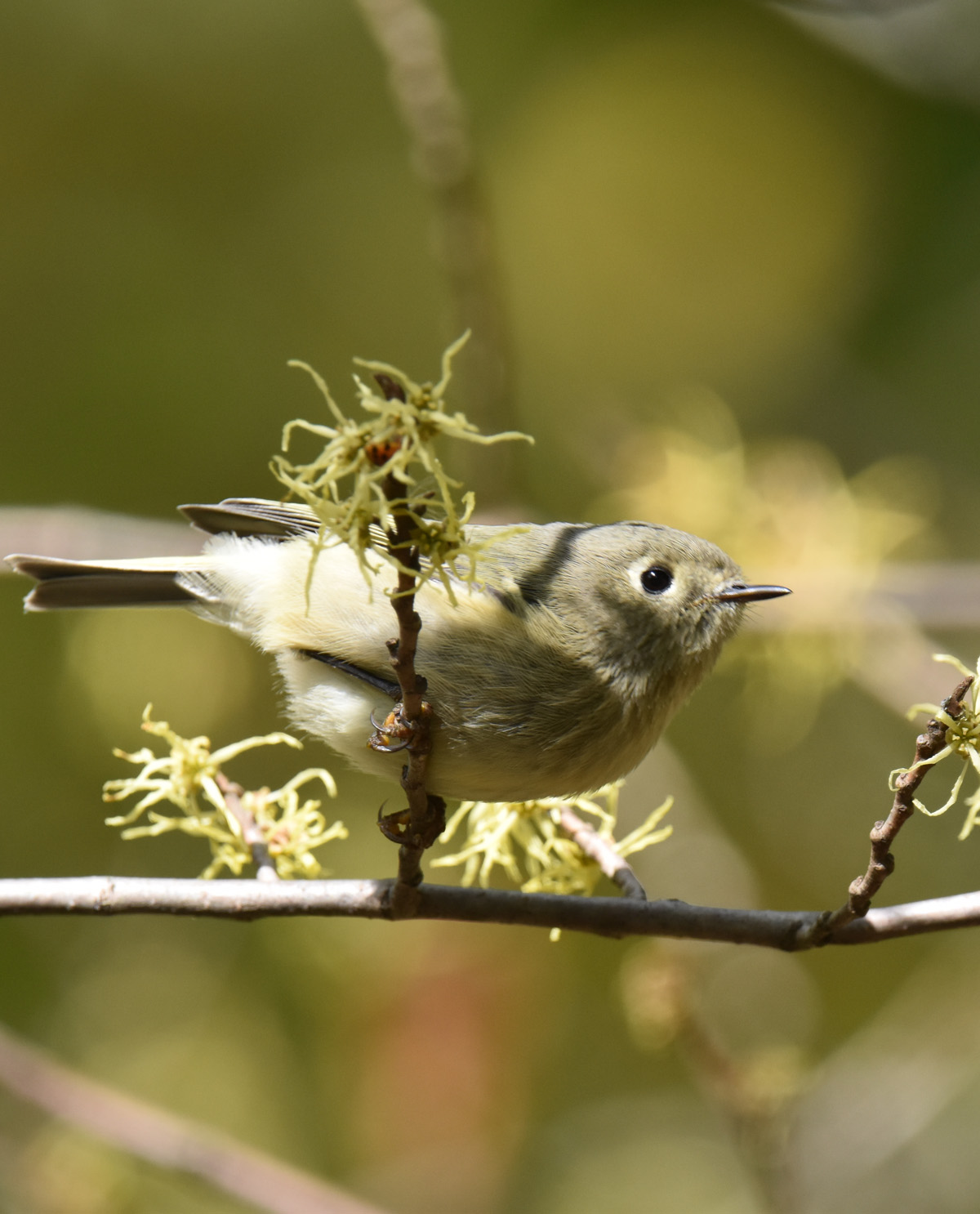 Now that I know insects pollinate these flowers, it makes even more sense to see this Ruby-crowned Kinglet looking for winged snacks in the Witch Hazel.
Now that I know insects pollinate these flowers, it makes even more sense to see this Ruby-crowned Kinglet looking for winged snacks in the Witch Hazel.
More interesting, it says that it takes the seeds about a year to develop in a capsule. When they are ready, it snaps open and flings the seeds away! I haven’t seen or heard that happen but I’ll be aware of the possibility of “seed schrapnel” when I’m walking on the Knoll boardwalk next year.
Watching Out for Witch Hazel
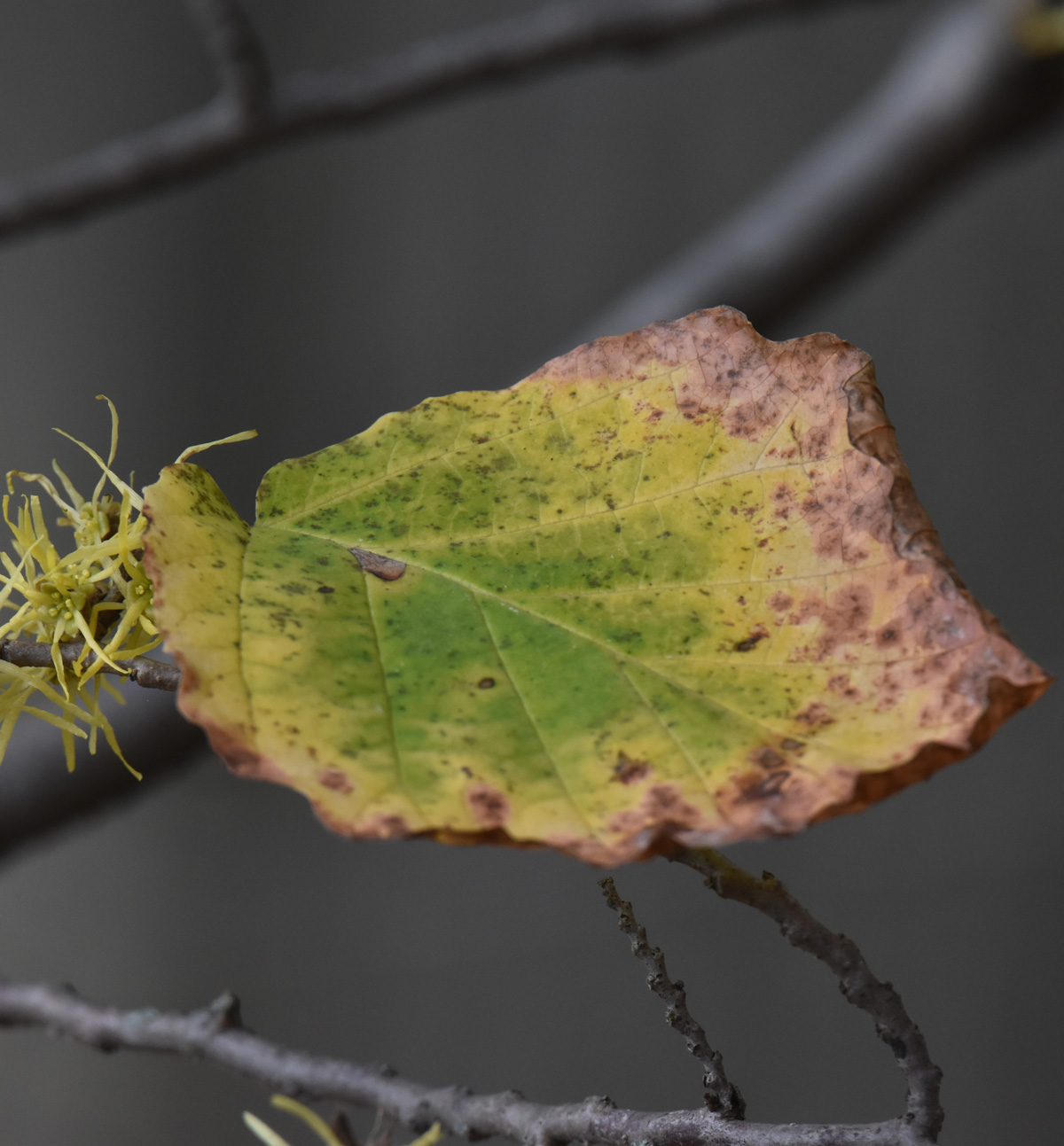
Info on the internet says that Witch Hazel leaves commonly turn colour like this with both a bright yellow and a rusty brown combination.
I’m going to try to remember the look of the bark and the shape of the leaves of Witch Hazel to see if I notice it in more parks on my walks.
I’m a tiny bit disappointed it’s not Spicebush, as I would love to see some Spicebush Swallowtails near me. But I guess I could always plant a Spicebush if I really mind.
Related Reading
Join In
Does Witch Hazel (or Spicebush) grow in your neck of the woods? Please share your sighting with a comment.
